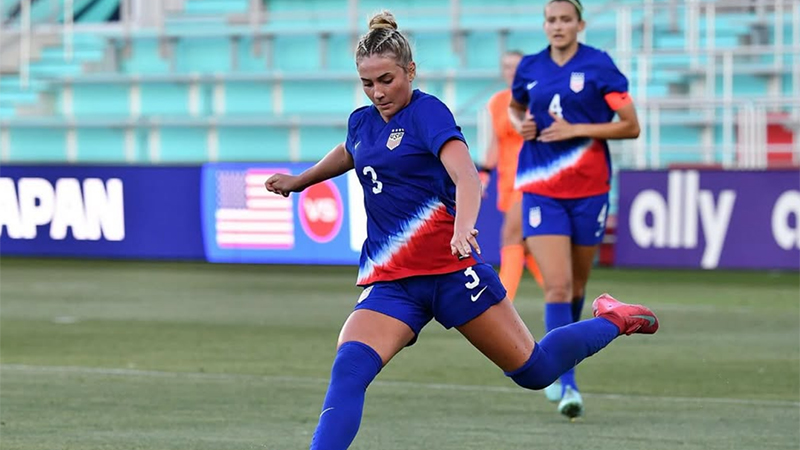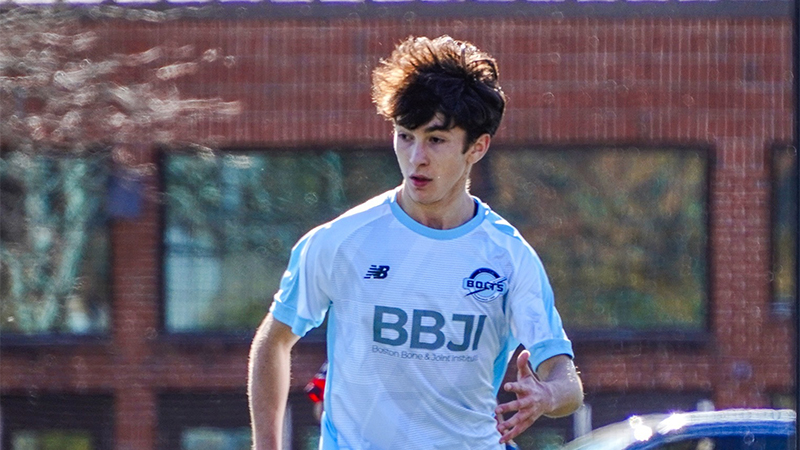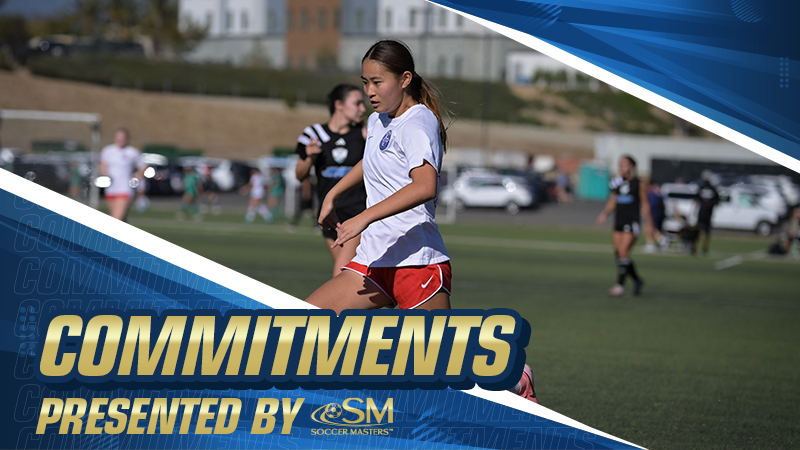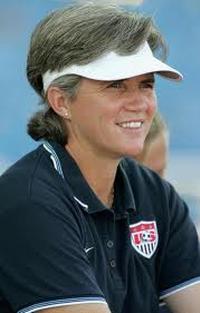 April Heinrichs
April HeinrichsHeinrichs on Progress, Part 3
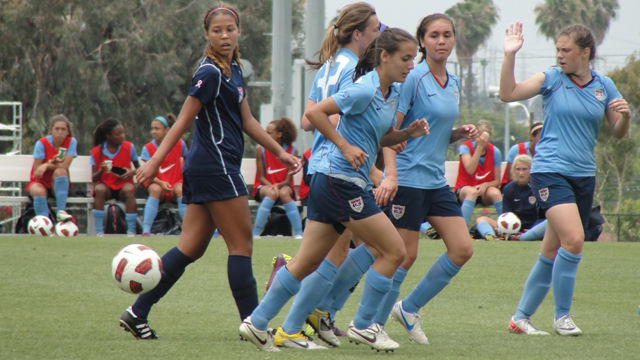
We were fortunate enough last week to speak with U.S. Soccer Women’s Technical Director April Heinrichs on the status of player development on the girls and women’s side. Heinrichs, who is now in overseas assisting the Women’s National Team at the London Olympics, has an extended history in the women’s game including coaching the USA WNT to an Olympic Gold Medal victory in the 2004 Summer Olympics. One thing I like about April is that she gives detailed answers and avoids fluff and clichés. As a result, we are running this interview in three parts.
Be sure to read Part One and Part Two.
Question: How do you rate the ability of our coaching cadre across the country, in evaluating talent?
 April Heinrichs
April HeinrichsAH: “I would give our coaches a pretty good score to evaluate talent in general. Where I think we are lagging behind the rest of the world is our ability to develop the player. We send regional teams to Russia and play teams two years older. We’re good at evaluating talent, specifically athletic talent. We’re good at finding ways to win. We’re not so good at developing requisite technical or tactical skills to play a certain position. One reason we’re not as good at that is we put too much of an emphasis on coaching teams to win and identifying athletic talent. I want to know where is the little girl, the Ingrid Wells, the Morgan Brian, the Sarah Killion, a smaller, extremely technical player."
Question: By overemphasizing athletes, aren’t we building a glass ceiling for ourselves competitively – teams that will only go so far until they meet better soccer players?
AH: “Yes. Put my name by that comment. For 20 years we’ve been building the physical and psychological side and for the next 20 years I want to build the technical and tactical sides. We need to flip the glass upside down. We have a large pool and there will always be athletes in the tradition of American sports, but we get bumped off by a savvier team if we don’t develop more technically and tactically like the French, the Germans or the Japanese.
“We will shift our focus without ignoring the physical and psychological. We have those players too. The question at the U14 or U15 level is whether a player is doing the thiings she needs to, to be on track for the national team. If not, the responsible thing to do, maybe not at U14 or 15, but at U18 or U20, is to cut her. Some of those bigger, stronger players may have seen better days. As a nation, we are going to shift to that kind of (technical) player. We can still get behind defenses, but we can also play in front of them. We can be direct if we need to be, but we play many different ways. That’s where we need to be. We have the pool to be able to do all 4 pillars of game without putting winning at risk. It doesn’t mean every single player needs to be 5 feet tall or that every player has to be of a certain technical quality, but we need to have our coaches focus on identifying technical and tactical quality. “
Question: What other issues will you be paying attention to?
AH: “I want to have more conversations on what it means to be a good soccer player when we talk to youth national teams. Dave Chesler has done a magnificent job of redesigning the coaching curriculum. Jill, Dave and I have gone to ODP and ECNL and U.S. Youth Soccer and NSCAA to get that message out.
“A fun thing about coming back to U.S. Soccer is that there are so many important partners. These partners are critical for our success. We talk about how vital partners are to us. We only have our (national team) players one week out of so many weeks depending on the time of year and the cycle and the specific youth national team. As critical as we think our programming is, we see a huge shot in the arm in their performance when we work with them, but it doesn’t take much to remind ourselves that their daily development is back at home. We’re depending on those coaches for us to have players who can play 90 minutes and who are good soccer players. In that regard, ECNL has been a great partner for us. They are very open to feedback from us and our interaction with scouting players, coaching education initiatives and that kind of thing. They basically took a great model (Development Academy) and mirrored it, without any of the resources that U.S. Soccer puts toward the DA. They’ve mirrored it with some good leaders who believed it was the right thing to do, and in a short time they’ve built it into something very good to compete in. We want to continue to interact with them along with U.S. Youth Soccer, ODP and college coaches.
“A good example of this is the rule (in ECNL) to limit substitutions. Because of the volume of substitutions, we are falling behind in terms of player development. If there is one one rule change that would help it would be limiting substitutions. If you are 13, 15 or 17 in Germany, Norway, China or Brazil, they are all playing with limited subs. So you learn how to manage the game and take care of the ball early on. When our players struggle with the ball, the coaches take them out 10 minutes into the game and put them back in 10 minutes later. We celebrate a coach’s tactical sub that leads to a goal, which was really just giving a tired player a rest, and internationally they wouldn’t even be allowed to do it. Changing that rule would also help coaches because they would have to learn to change things with tactics instead of always substituting.
“In college soccer, the ones most concerned about rule changes on subs are the ones that have very large rosters. It would neutralize advantage the big schools have where they can wear another team down simply because of having a larger revolving door.”
Thanks again to April for sharing so many thoughts with us. We could have kept talking about player development all day, but there were other tasks at hand (going to The Olympics in her case).
Headlines
- Recruiting Roundup: July 14-20
- 2025 Women's Division I Transfer Tracker
- How Do I Get Scouted by TopDrawerSoccer?
- U17 WNT Roster for 4 Nations Tournament
- MLS NEXT Announces 2024-25 Awards
-
2025 Women's WCC Breakout Candidates

-
Players to Watch at MLS NEXT All-Star

-
Women's WAC Breakout Candidates

-
Commitments: Making a Move to Minnesota

- TDS Names NPSL Young Player of the Season

